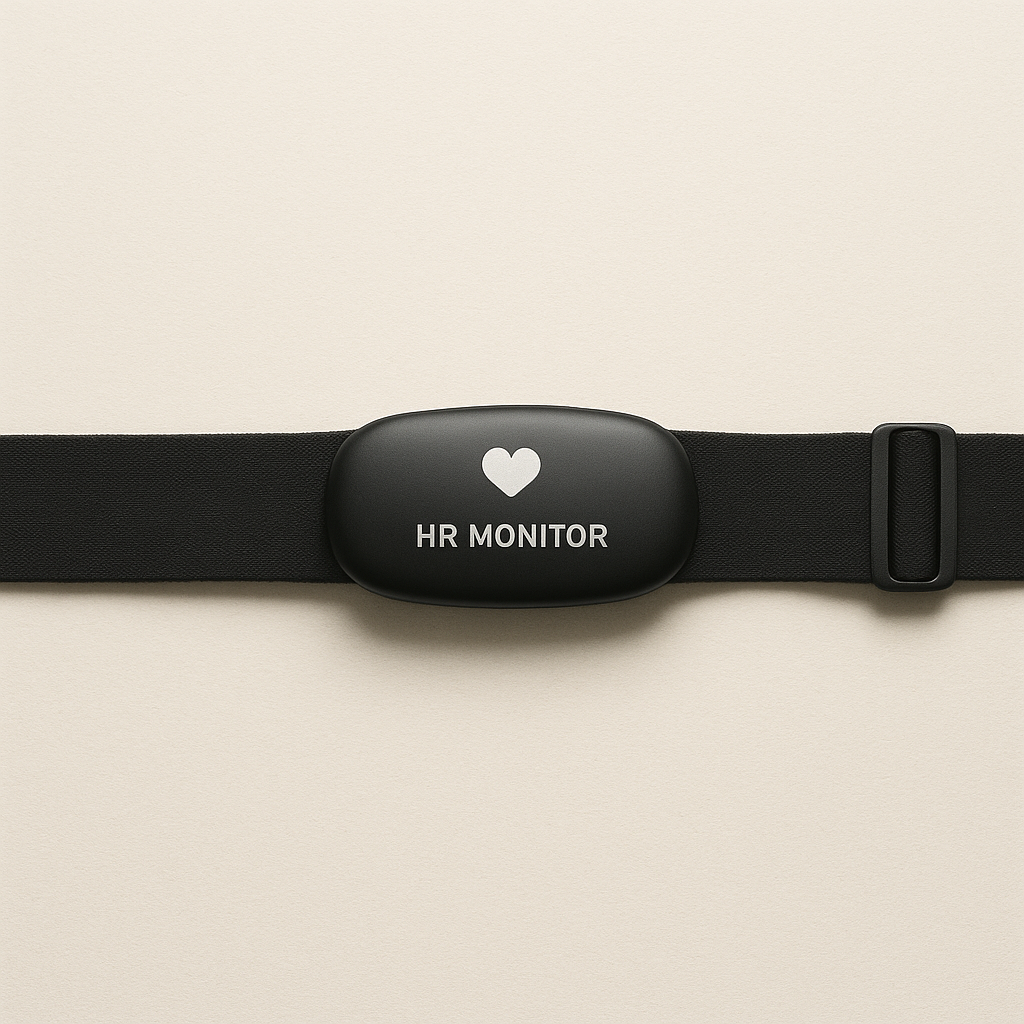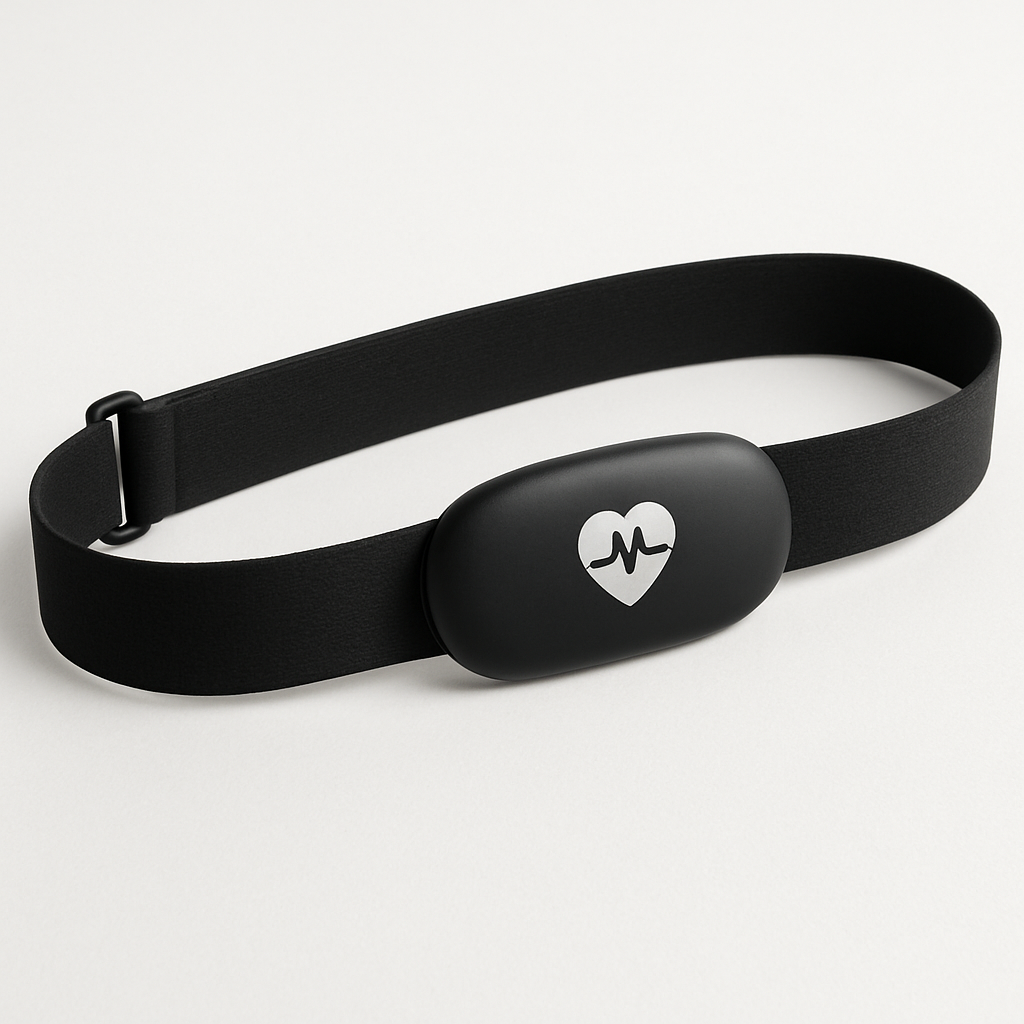Understanding Chest Strap HR Monitor
Today, many people are trying to live a healthy life. Whether you walk daily, go to the gym, cycle, or run, keeping track of your heart rate can be very useful. One of the best tools to help you do this is a Chest Strap HR Monitor. It is a device that you wear around your chest. It helps you know your heart rate in real-time. This way, you can see if you are working too hard or not enough during your workout.
The chest strap HR monitor is more accurate than many smartwatches or fitness bands. It works by reading the electrical signals that your heart produces when it beats. Because it sits close to your heart, the reading is quick and very accurate. That’s why athletes, trainers, and fitness lovers use it.
In this article, we will learn about the chest strap HR monitor, how it works, its benefits, how to use it, and how to choose the right one. This article is written in very simple words, so everyone can understand it clearly. Let’s begin by looking at why heart rate monitoring is so important for your health.
Why Monitor Your Heart Rate?
Monitoring your heart rate is one of the most helpful things you can do for your health. Your heart rate tells you how fast your heart is beating per minute. This is important because it helps you know how hard your body is working during exercise or rest.
When you wear a chest strap HR monitor, you can see if your heart rate is too high, too low, or just right. If your heart rate goes too high, it might be a sign that you're overworking your body. If it’s too low, maybe you need to push a little more.
Knowing your heart rate can help you:
-
Exercise safely: You can avoid injuries by not pushing too hard.
-
Burn fat effectively: There’s a heart rate range called the “fat-burning zone.” If you stay in this range, your body uses more fat for energy.
-
Improve fitness levels: You can train in different heart rate zones for different results.
-
Track your progress: Over time, you can see how your resting heart rate improves.
Doctors also use heart rate to know about your heart health. A very fast or very slow heartbeat at rest may be a warning sign.
Using a chest strap HR monitor gives you real-time information. It’s much better than just guessing how your body is doing. Whether you're walking, running, lifting weights, or doing yoga, knowing your heart rate helps you get the best results safely.
How Chest Strap HR Monitors Work
A chest strap HR monitor is a smart and simple device. It is worn around your chest, just below the chest muscles. It has two main parts – the strap and the sensor.
The strap is made from a soft, stretchable material. It fits comfortably and holds the sensor in place. The sensor is the most important part. It reads the tiny electrical signals that your heart produces when it beats. These signals are the same ones used in medical ECG machines.
Once the sensor picks up your heart signals, it sends the data to your phone, smartwatch, or fitness app using Bluetooth or ANT+ technology. Many popular fitness apps support these devices. So, you can easily see your heart rate on your phone while exercising.
Here’s how it works in a few simple steps:
-
You wear the strap around your chest, tight enough to stay in place but not too tight.
-
The sensor starts to read the electrical activity of your heart.
-
It sends signals to your connected device.
-
Your device shows your heart rate in beats per minute (BPM).
This data is very accurate because it comes straight from your heart. That’s why chest strap HR monitors are better than wristbands, which use light sensors and may not always be accurate during intense workouts.
Benefits of Chest Strap HR Monitor
Using a chest strap HR monitor has many helpful benefits, especially for people who are serious about their fitness goals. Even beginners can find it very useful. Let’s look at some of the top benefits:
1. High Accuracy
Chest strap monitors are known for their excellent accuracy. They give real-time heart rate data that is very close to what you’d get from medical machines. That’s why athletes trust them.
2. Real-Time Tracking
You get your heart rate instantly while working out. This helps you make quick decisions – slow down or push harder based on your heart rate zone.
3. Better Workout Planning
Knowing your heart rate helps you train smarter. You can create workout plans based on different heart rate zones – fat burn, cardio, peak, etc.
4. Helps in Recovery
You can monitor how fast your heart rate goes back to normal after a workout. Faster recovery means better heart health.
5. Motivation to Stay Active
Seeing your progress on the app can motivate you to stick to your routine. It gives you goals to beat each week.
6. Syncs With Apps
Most chest strap HR monitors connect with apps like Strava, Nike Training, Garmin, and more. This makes it easy to keep records and share progress.
7. Good for All Exercises
Whether you are doing cardio, lifting weights, cycling, or doing HIIT workouts, a chest strap HR monitor can track it all.
Choosing the Best HR Monitor
When buying a chest strap HR monitor, it’s important to choose the right one. There are many options in the market, so let’s look at what things you should check:
1. Comfort and Fit
Make sure the strap is soft and adjustable. You should be able to wear it for a long time without discomfort.
2. Accuracy
Look for a model with a proven track record of accurate heart rate readings. Reading reviews can help you decide.
3. Connectivity
Your monitor should support Bluetooth and ANT+ so that it works with many devices and apps. This makes it more useful.
4. Battery Life
A long battery life is important, especially if you train regularly. Some models have replaceable batteries, while others are rechargeable.
5. Water Resistance
If you sweat a lot or plan to use it in rainy conditions, water resistance is important. Some models can even be used for swimming.
6. App Compatibility
Check if it works with your favorite fitness apps like Strava, Zwift, Peloton, or Garmin Connect.
7. Price
There are budget-friendly and premium models. Set your budget and pick one that gives the best value for your money.
Some popular models include Polar H10, Garmin HRM-Pro, and Wahoo Tickr X. Each has different features. Think about your needs and pick the one that suits your fitness journey.

How to Use It Correctly
Wearing a chest strap HR monitor the right way is very important. If not worn properly, it may not give correct results. Here is a simple guide to use it correctly:
Step 1: Wear It Properly
Place the strap around your chest, just below the chest muscles. Make sure it is not too loose or too tight. It should touch your skin directly – not over clothes.
Step 2: Wet the Electrodes
Some chest straps work better if the sensors are slightly wet. Just put a little water on the inside pads before wearing. This helps in better signal detection.
Step 3: Connect to Your Device
Open the fitness app on your smartphone or smartwatch. Turn on Bluetooth, and pair the strap. Once connected, you should see your heart rate on the screen.
Step 4: Start Your Workout
Begin your exercise session. Keep an eye on your heart rate to make sure you stay in the right zone for your goal – whether it's fat burn, endurance, or peak performance.
Step 5: Check After Workout
After finishing, remove the strap and check the workout summary in the app. See your average heart rate, highest heart rate, and how long you stayed in each zone.
Step 6: Clean and Store
Always clean the strap after use with water and mild soap. Let it dry before storing. This keeps it in good shape and avoids skin irritation.
Chest Strap vs Other Monitors
When choosing a heart rate monitor, many people compare chest strap HR monitors with other types like wristbands or smartwatches. Here’s how they compare:
Accuracy
-
Chest Straps: Very accurate. They read electrical signals from the heart.
-
Wristbands/Smartwatches: Use light sensors (PPG). May show wrong readings during intense workouts or movement.
Comfort
-
Chest Straps: Can feel tight at first, but you get used to it.
-
Wristbands: Easier to wear daily but may not work well during heavy sweating.
Workout Use
-
Chest Straps: Best for serious workouts, running, cycling, gym.
-
Smartwatches: Good for general use, walking, or casual fitness.
Price
-
Chest Straps: Usually affordable. Some premium models cost more.
-
Smartwatches: Can be expensive depending on brand and features.
Battery
-
Chest Straps: Long battery life (replaceable or rechargeable).
-
Smartwatches: Need frequent charging.
If you are serious about fitness or want accurate heart data, a chest strap HR monitor is the better choice. For casual users, a smartwatch may be enough.
Conclusion: A Smart Fitness Partner
The chest strap HR monitor is a great tool for anyone who wants to exercise smarter and live a healthier life. It helps you understand how your heart is working during different activities. You can stay in the right heart rate zone, avoid overtraining, and track your improvement easily.
Unlike wristbands or watches, chest straps give more accurate results. Whether you are a beginner or a pro, using this tool can boost your performance and safety. It’s simple to use, easy to connect with apps, and gives you real-time feedback.
So, if you care about your fitness goals and want to make your workouts more effective, investing in a chest strap HR monitor is a smart decision.
Frequently Asked Questions (FAQs)
Q1: Is a chest strap HR monitor better than a smartwatch?
Yes. A chest strap HR monitor is more accurate than a smartwatch, especially during intense workouts.
Q2: Can I use it while swimming?
Some models are water-resistant and can be used for swimming. Check the product details before buying.

